Francesca and Henk-Jan's Backpacking Trip!
Sunday, August 22, 2010
The Last Monastery
On the morning of the 22nd Francesca and I met Sam in the hallway of the Everest Friendship Hotel to get some breakfast before getting on the road again. We had to get Sakya County, southwest of Shigatse. After our average bread and jelly we jumped in the car and started driving. Sam pulled out her iPod and speakers and blessed the car with some non-Tibetan music. Along the way to Sakya we passed a cool marker, stating we were 5000 kilometers away from Shanghai. Francesca and Sam popped out of the car to take a few pictures whilst I continued to listen to Sam’s iPod.
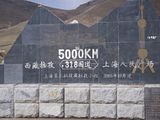
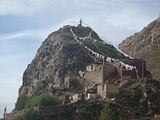
Just past 11:00 AM we reached the highest point of the Tsola Pass, with 4900 meters one of the shorter passes we’d come across in all of Tibet. Still, the view was impressive. About an hour later, just past noon, we arrived in Sakya proper, ready to explore our last real monastery of our trip. Sakya Monastery is the only monastery of the Sakya Sect, and would therefore hopefully be different from our previous experiences.
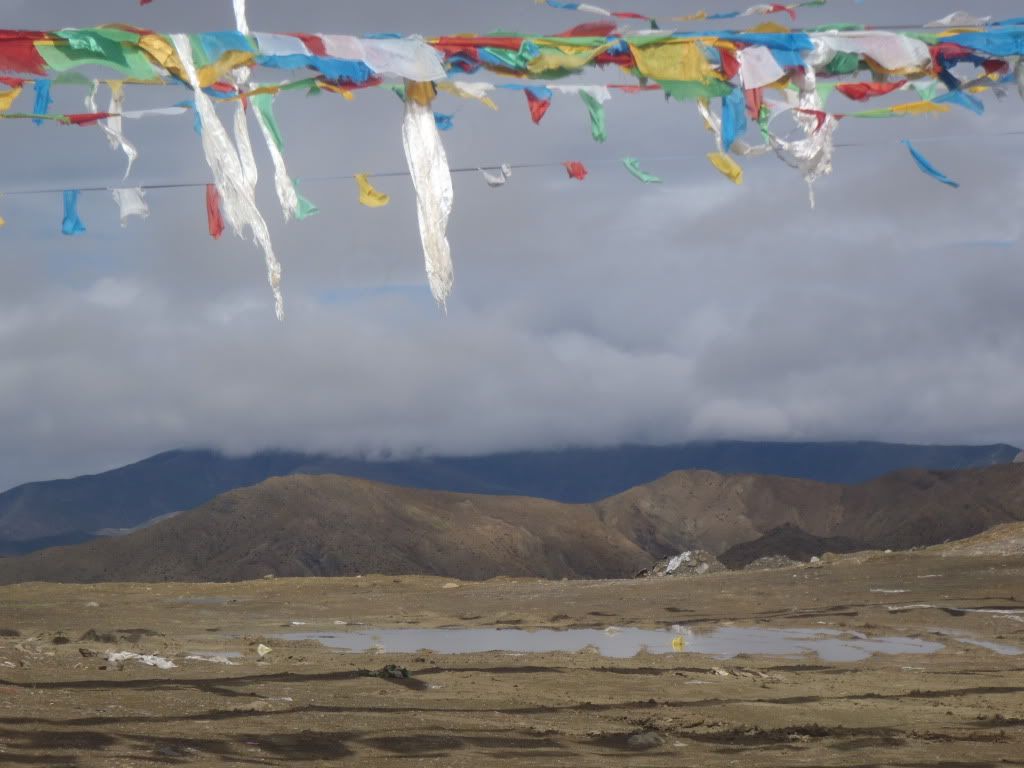
Originally, the Sakya Monastery comprised two buildings. The first was the Northern Monastery. In 1073, Khon Konchog Gyalpo, the founder of Sakyapa Sect, built a white palace on a grey clay hill near the northern bank of the Chun Qu River. The locals named the palace 'Sakya' which means ‘grey soil.’ This was the Northern Monastery, but today it is visible only as a ruin. The second building, the Southern Monastery, was built like a fortress and surrounded by a moat. Construction of the monastery began in 1268 and was commissioned by Choygal Phakpa, the fifth descendent of Sakya Sect. The walls of this monastery were painted in red, white and grey which indicate Manjusri Bodhisattva, Avalokiteshvara and Vajradhara and was the building we’d visit today.

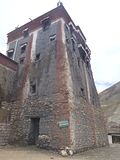
The moat is no longer part of the premises, but the Monastery, as built by Choygal Pakpa still has its colors intact. Our little group walked up to the enormous black walls and entered through the equally impressive gate. We entered a small courtyard where we purchased our entrance tickets and had a look at some enormous (and ugly) Chinese lions. We learned that these lions were gifted to the monastery by Shanghai, but sadly we also heard Tibetans have started copying the tradition of putting lions in front of their doors. Ignoring those abominations the rest of the courtyard simply looked wonderful. Everything had been painted in the colors I mentioned before, with small paintings as extra decorations all over the place as well. And all around us prayer wheels lined the walls.
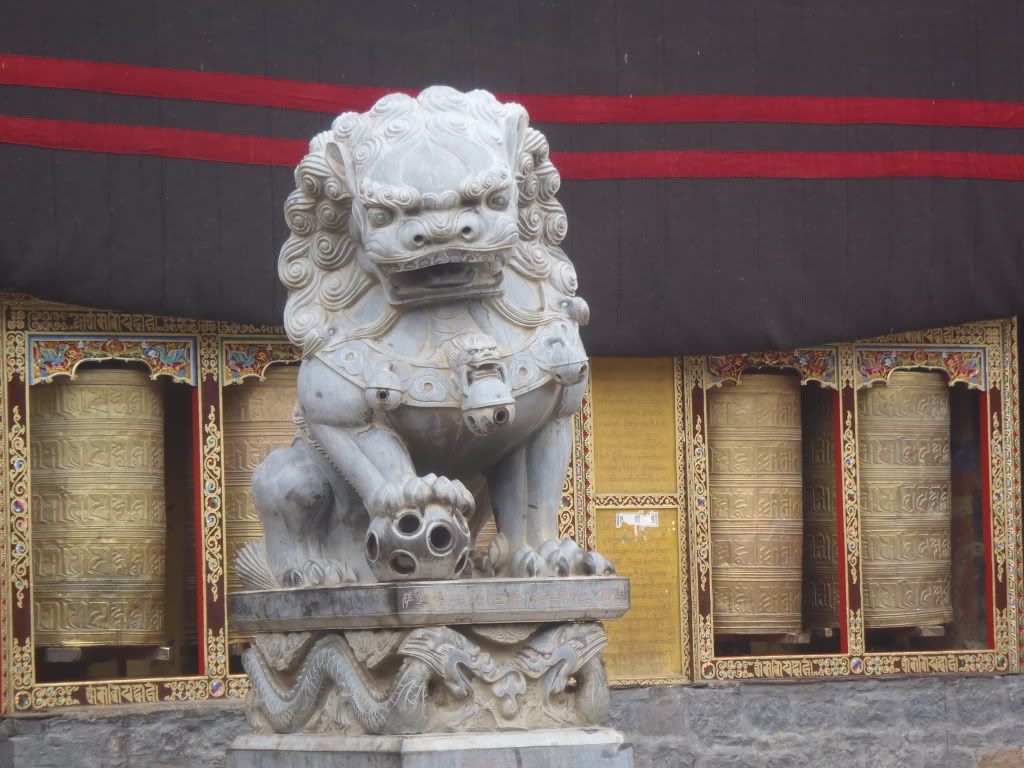

I walked ahead, following Ray through another tunnel, whilst the girls trailed a little behind me. Ray led us into a small hall on the left, where a ceremony was taking place. Trying not to disturb the monks we had a quick look at the statue of Shakyamuni and a somewhat obscured mandala with some foot high statues that looked pretty cool. A little later we entered the ‘Main Chanting Hall,’ also called ‘Lakhang Chenmo’ in Tibetan. What an enormous space! We heard it can hold about 10,000 monks in total. To support such an enormous chapel the pillars were imported from Kashmir in India – the wood apparently only got stronger as the ages passed. Four of the pillars are over 1 meter in diameter and now feel as hard as stone. In the hall we spotted three enshrined Buddhas – Dipamkarara, Sakyamuni and Maitreya, and five Sakyapa ancestors.
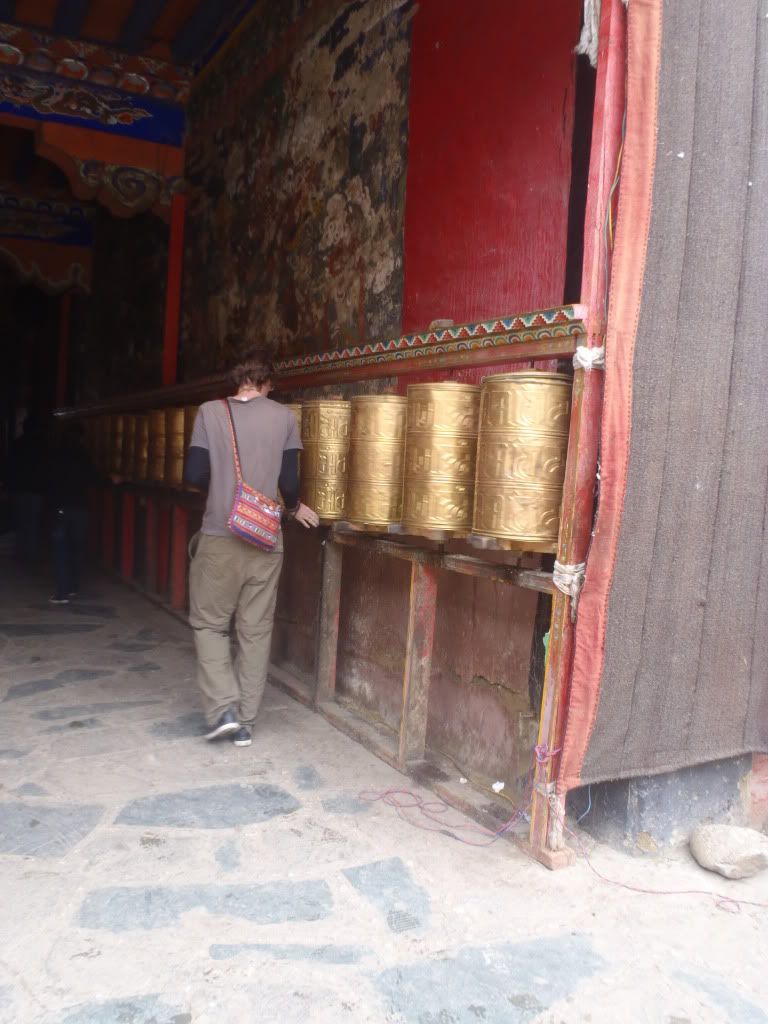
Ray then led us to the southwestern corner of the hall, where we had to pay a little extra to see the most impressive hall of the entire monastery. As we entered the library an enormous wall of books dawned in front of us. Apparently the collection here is second-largest in all of Tibet. It is rumored over 40,000 volumes of scriptures – both Shakyamuni’s teachings and commentaries by other monks – are kept here. The whole wall is “about 57 meters (187 feet) long, 11 meters high (36 feet) and one meter wide (three feet) and has 464 grids. Among them, the most precious is Burde Gyaimalung, which records Tibetan religion, history, philosophy, literature, agriculture and animal husbandry. It is 1.8 meters (six feet) long, 1.3 meters (four feet) wide and 0.67 meter (two feet) thick and boasts the biggest scriptures in the world. Additionally, it also houses 21 volumes of Buddhist scriptures written on Pattra leaves in Sanskrit. Each consists of one hundred to two hundred pages and four-color illustrations. They are the most precious sutras in the world.” Thank you travelchinaguide.com. Legend has it that even if the monastery were to crumble the library would stay intact.
Thoroughly impressed we headed back outside and climbed a steep staircase to the second floor. Several smaller halls are home to murals of mandalas, the best preserved in the monastery. Other murals depict Guru Rinpoche and his manifestations, still preserved with their original paint. After going back down the stairs there was one hall left to visit: the Shrine of Choygal Pakpa. We passed a door with the remains of some wolves above the door, put there by protectors of the monastery. Creepy! The Shrine used to be Pakpa’s living quarters, but was sadly partially destroyed during the Cultural Revolution. The monks are still collecting money to have the place restored… We had a quick look inside, but had to agree with them: the place does indeed need some renovation.

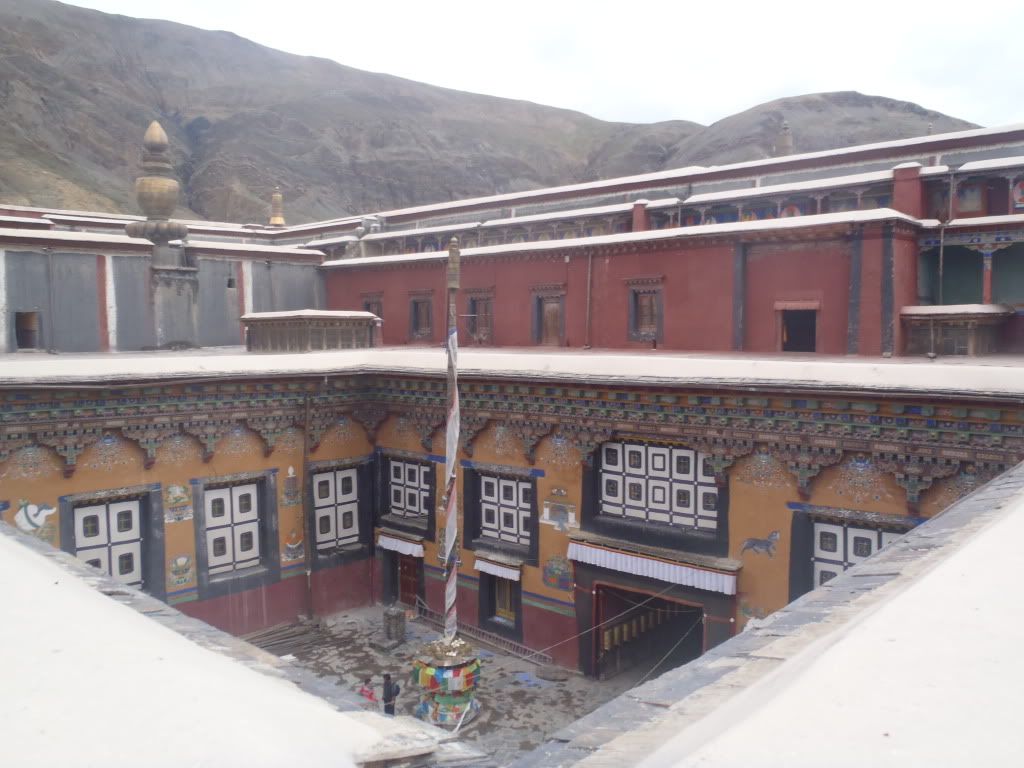
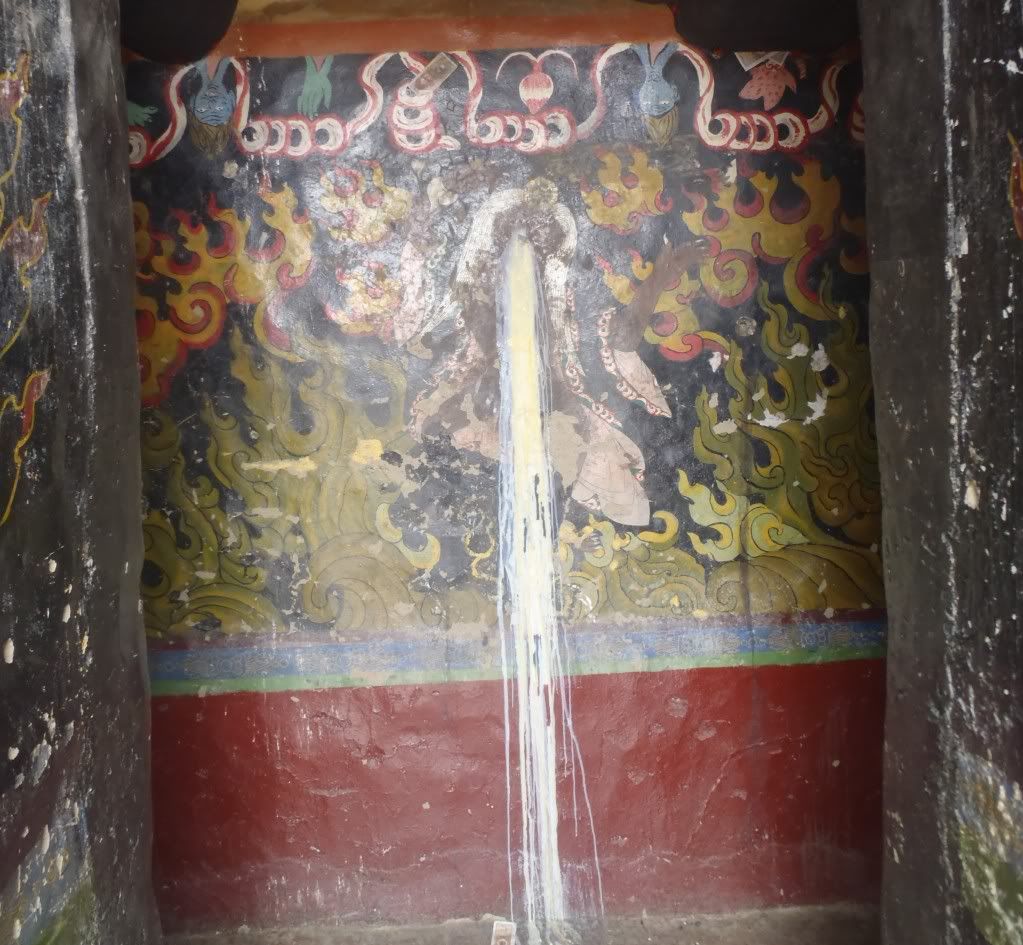


Lunchtime had come for us as we were all a little hungry. Ray led us to a large factory of a restaurant called “Manarasovar Restaurant.” Francesca and I ordered a chicken noodle and a cream of tomato soup with some naans to still our appetite. Francesca’s tomato soup arrived after a long wait and tasted pretty bad. She decided to order a butter chicken to fill her up, which was also what Sam did. After 45 minutes of waiting the food still hadn’t arrived and we had more driving to do. Ray walked into the kitchen a few times, after which the meals finally came. The girls were not impressed by the meager amount of chicken and average curry.
Dissatisfied with the poor food we had to get on the road again. Everest Base Camp was coming closer and we could get within viewing distance if we’d keep driving that day. So, onwards we went, passing old ruins of even older, abandoned towns, all the while listening to Sam’s music. Just after 4:00 PM we reached the highest point we’d reach with the 4WD of our entire trip: Gyatsola Pass. With an impressive altitude of 5240 meters a pretty impressive place to get out of the car and take a few pictures. But, even better, there was some snow lying around here! I got to make up for missing the snow in the Netherlands earlier this year and had a snowball fight with Sam, some Italians and a few local kids. Francesca’s stomach had started complaining a bit after the butter chicken and had her stay in the car.
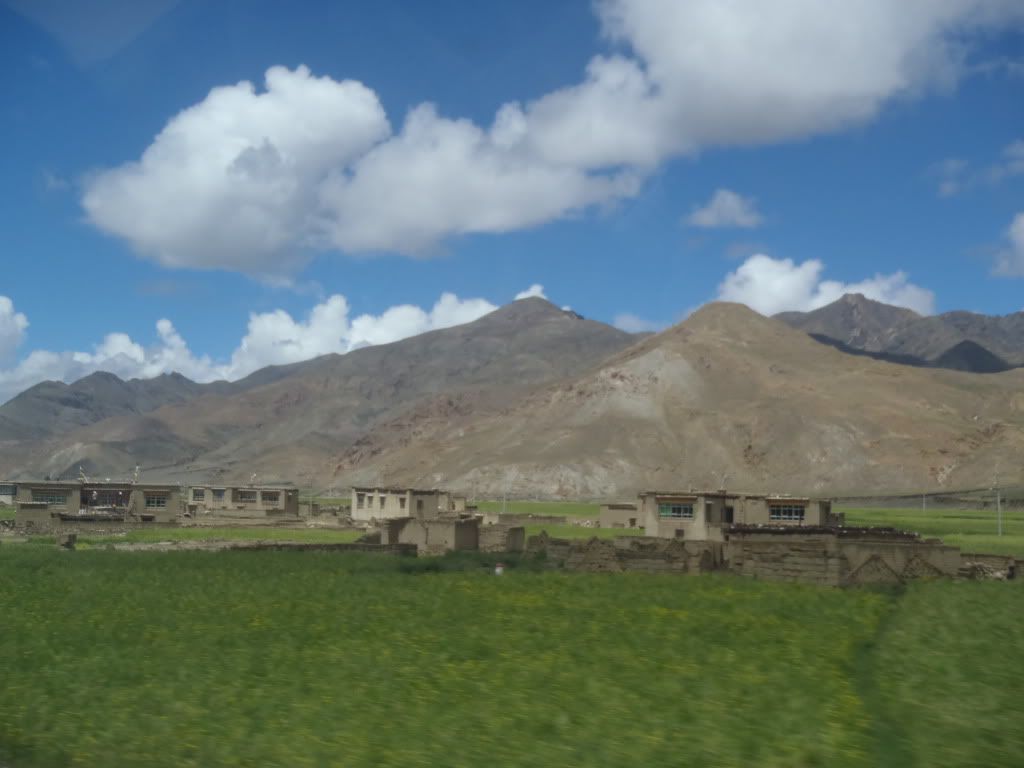
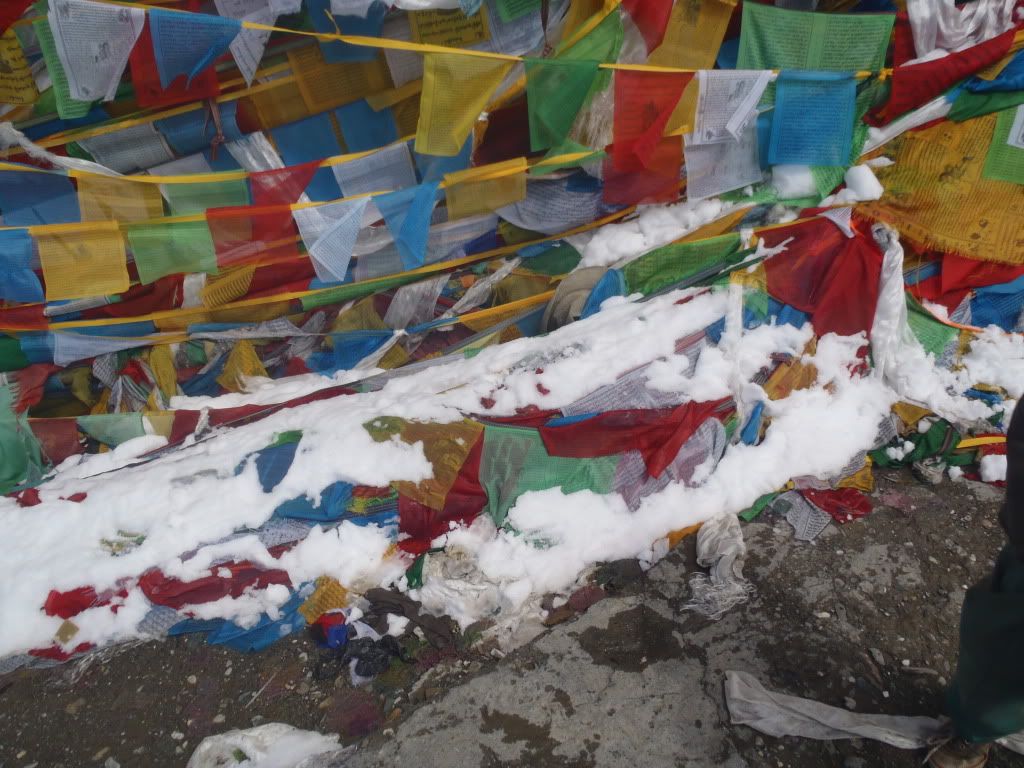
Just five minutes later she did have to get out of the car though: the Himalayas had appeared in our view and it was time to take a few pictures. On our way to Shegar and Mount Everest behind us the eternal snow appeared all around us. Seeing those snow topped cones really started working on our imagination and we were all getting extremely excited to see Everest. Ray warned us not to get our hopes up too much, because it wasn’t really the season to view Everest and it might very well be cloudy… Furthermore, we’d met some other travelers in Shigatse that had already gone to Everest, spent several hours at Base Camp and hadn’t gotten more than 5 minutes of clear view. Ah, I just realized Francesca already told you about that. Oh well, it’s good to refresh your memory anyway!
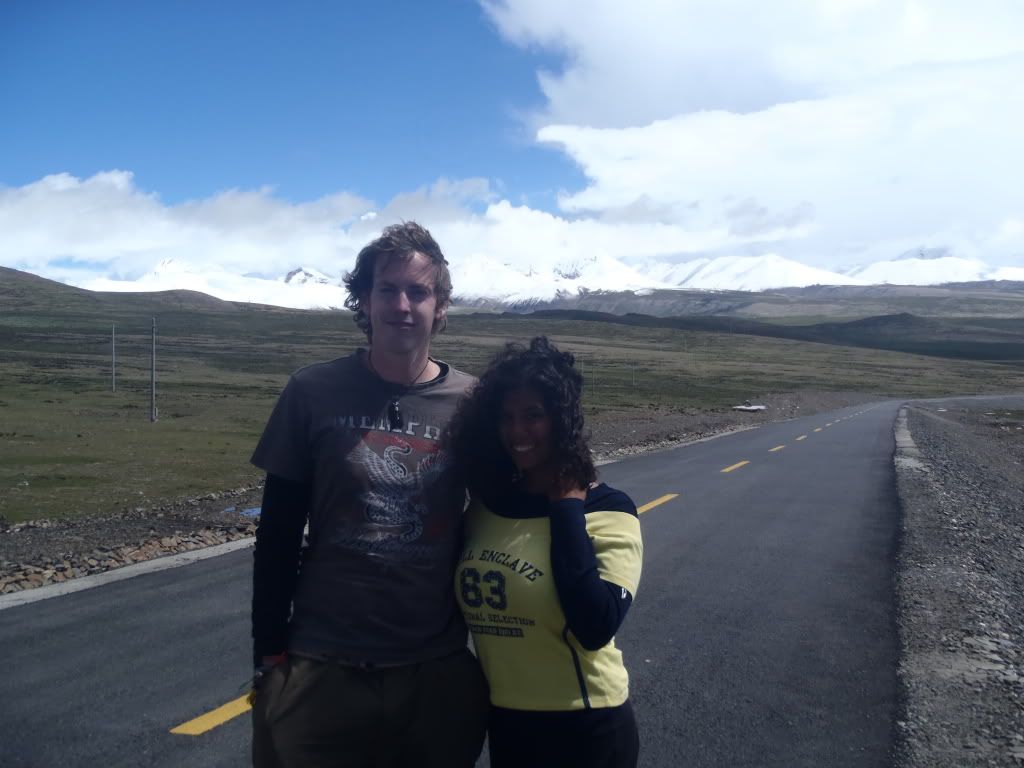
Around 5:00 PM Ray had Monday stop by the side of the road. We were unsure what was going on, until a nomad came up to the car and showed us a collection of ancient fossils (the forefathers of the modern day nautilus) which are apparently plentiful in the Everest-region. Francesca really wanted to buy a big one, but we couldn’t really carry around the enormous rock it came in. So we settled for a smaller, but more intact one that cost us no more than 10 Yuan ($1.5). We figured there’d be pretty good business buying these things off these guys and selling them back at home. Maybe next time we’ll bring an empty backpack with us!

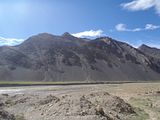
Another 30 minutes later we arrived in Shegar, our stop for the night. Ray led us to the aptly named Shegar Hotel, where the rooms were – hmm, how shall I say this – basic. Our double room was somewhat decent, but Sam’s dorm (which she had to herself) had a door that wouldn’t close and mattresses and beds all over the place. I won’t even say a thing about the ‘toilet’ facilities present. Sam and I had a look around in Shegar and found the town to be as bad as the hotel. The following picture shows pretty much all of Shegar. What an eye-sore. The only thing that is missing is the droves of dogs roaming the streets. We started fearing their incessant barking long before the night started…
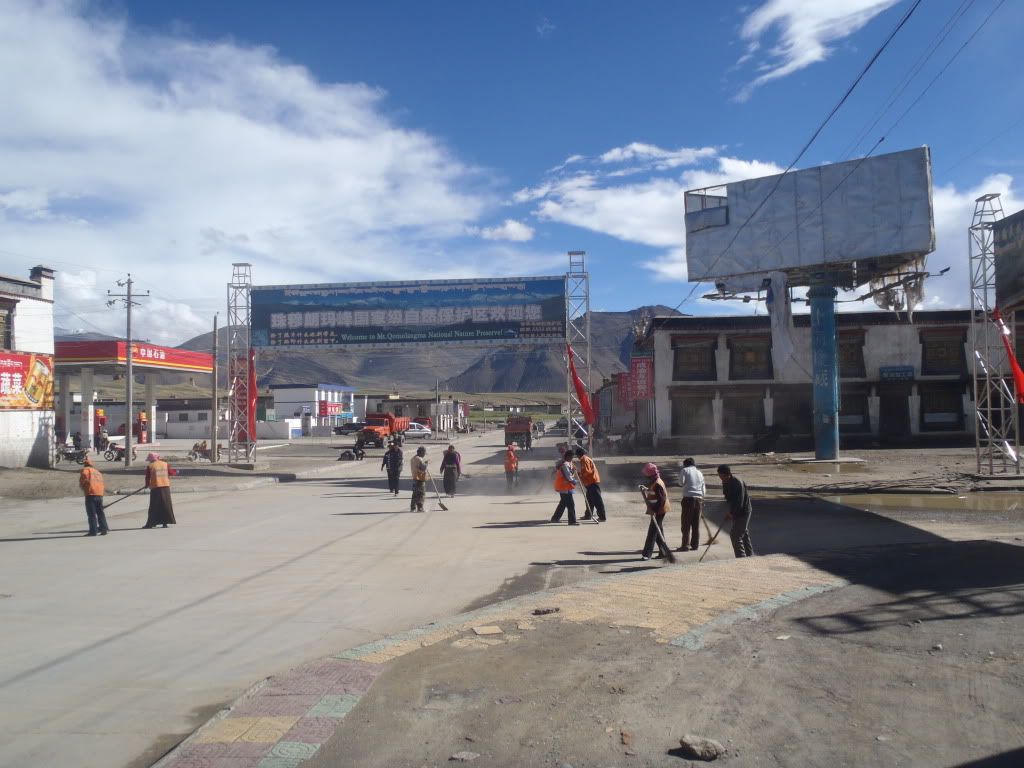
I sat down with Ray and Sam to purchase our Everest Base Camp tickets for the day after. Boy, they’ve got a real moneymaker on their hands there… A good$ 100 lighter we were set for our encounter with Everest. I pulled Francesca out of our room and we headed for dinner across the street. The “Tashi Restaurant” was actually brand new and managed to provide a pretty decent butter chicken and sweet and sour chicken, which Francesca and I shared. After our chow we all headed to our miserable beds and tried to get sleep. Between the loud Chinese people that came in yelling in the middle of the nights (a good whack on the thin walls and some shouting on my part shut them up!), the dogs, and the passing trucks our shut-eye that night wasn’t too write home about (I’m doing it anyway!).


Just past 11:00 AM we reached the highest point of the Tsola Pass, with 4900 meters one of the shorter passes we’d come across in all of Tibet. Still, the view was impressive. About an hour later, just past noon, we arrived in Sakya proper, ready to explore our last real monastery of our trip. Sakya Monastery is the only monastery of the Sakya Sect, and would therefore hopefully be different from our previous experiences.

Originally, the Sakya Monastery comprised two buildings. The first was the Northern Monastery. In 1073, Khon Konchog Gyalpo, the founder of Sakyapa Sect, built a white palace on a grey clay hill near the northern bank of the Chun Qu River. The locals named the palace 'Sakya' which means ‘grey soil.’ This was the Northern Monastery, but today it is visible only as a ruin. The second building, the Southern Monastery, was built like a fortress and surrounded by a moat. Construction of the monastery began in 1268 and was commissioned by Choygal Phakpa, the fifth descendent of Sakya Sect. The walls of this monastery were painted in red, white and grey which indicate Manjusri Bodhisattva, Avalokiteshvara and Vajradhara and was the building we’d visit today.


The moat is no longer part of the premises, but the Monastery, as built by Choygal Pakpa still has its colors intact. Our little group walked up to the enormous black walls and entered through the equally impressive gate. We entered a small courtyard where we purchased our entrance tickets and had a look at some enormous (and ugly) Chinese lions. We learned that these lions were gifted to the monastery by Shanghai, but sadly we also heard Tibetans have started copying the tradition of putting lions in front of their doors. Ignoring those abominations the rest of the courtyard simply looked wonderful. Everything had been painted in the colors I mentioned before, with small paintings as extra decorations all over the place as well. And all around us prayer wheels lined the walls.


I walked ahead, following Ray through another tunnel, whilst the girls trailed a little behind me. Ray led us into a small hall on the left, where a ceremony was taking place. Trying not to disturb the monks we had a quick look at the statue of Shakyamuni and a somewhat obscured mandala with some foot high statues that looked pretty cool. A little later we entered the ‘Main Chanting Hall,’ also called ‘Lakhang Chenmo’ in Tibetan. What an enormous space! We heard it can hold about 10,000 monks in total. To support such an enormous chapel the pillars were imported from Kashmir in India – the wood apparently only got stronger as the ages passed. Four of the pillars are over 1 meter in diameter and now feel as hard as stone. In the hall we spotted three enshrined Buddhas – Dipamkarara, Sakyamuni and Maitreya, and five Sakyapa ancestors.

Ray then led us to the southwestern corner of the hall, where we had to pay a little extra to see the most impressive hall of the entire monastery. As we entered the library an enormous wall of books dawned in front of us. Apparently the collection here is second-largest in all of Tibet. It is rumored over 40,000 volumes of scriptures – both Shakyamuni’s teachings and commentaries by other monks – are kept here. The whole wall is “about 57 meters (187 feet) long, 11 meters high (36 feet) and one meter wide (three feet) and has 464 grids. Among them, the most precious is Burde Gyaimalung, which records Tibetan religion, history, philosophy, literature, agriculture and animal husbandry. It is 1.8 meters (six feet) long, 1.3 meters (four feet) wide and 0.67 meter (two feet) thick and boasts the biggest scriptures in the world. Additionally, it also houses 21 volumes of Buddhist scriptures written on Pattra leaves in Sanskrit. Each consists of one hundred to two hundred pages and four-color illustrations. They are the most precious sutras in the world.” Thank you travelchinaguide.com. Legend has it that even if the monastery were to crumble the library would stay intact.
Thoroughly impressed we headed back outside and climbed a steep staircase to the second floor. Several smaller halls are home to murals of mandalas, the best preserved in the monastery. Other murals depict Guru Rinpoche and his manifestations, still preserved with their original paint. After going back down the stairs there was one hall left to visit: the Shrine of Choygal Pakpa. We passed a door with the remains of some wolves above the door, put there by protectors of the monastery. Creepy! The Shrine used to be Pakpa’s living quarters, but was sadly partially destroyed during the Cultural Revolution. The monks are still collecting money to have the place restored… We had a quick look inside, but had to agree with them: the place does indeed need some renovation.





Lunchtime had come for us as we were all a little hungry. Ray led us to a large factory of a restaurant called “Manarasovar Restaurant.” Francesca and I ordered a chicken noodle and a cream of tomato soup with some naans to still our appetite. Francesca’s tomato soup arrived after a long wait and tasted pretty bad. She decided to order a butter chicken to fill her up, which was also what Sam did. After 45 minutes of waiting the food still hadn’t arrived and we had more driving to do. Ray walked into the kitchen a few times, after which the meals finally came. The girls were not impressed by the meager amount of chicken and average curry.
Dissatisfied with the poor food we had to get on the road again. Everest Base Camp was coming closer and we could get within viewing distance if we’d keep driving that day. So, onwards we went, passing old ruins of even older, abandoned towns, all the while listening to Sam’s music. Just after 4:00 PM we reached the highest point we’d reach with the 4WD of our entire trip: Gyatsola Pass. With an impressive altitude of 5240 meters a pretty impressive place to get out of the car and take a few pictures. But, even better, there was some snow lying around here! I got to make up for missing the snow in the Netherlands earlier this year and had a snowball fight with Sam, some Italians and a few local kids. Francesca’s stomach had started complaining a bit after the butter chicken and had her stay in the car.


Just five minutes later she did have to get out of the car though: the Himalayas had appeared in our view and it was time to take a few pictures. On our way to Shegar and Mount Everest behind us the eternal snow appeared all around us. Seeing those snow topped cones really started working on our imagination and we were all getting extremely excited to see Everest. Ray warned us not to get our hopes up too much, because it wasn’t really the season to view Everest and it might very well be cloudy… Furthermore, we’d met some other travelers in Shigatse that had already gone to Everest, spent several hours at Base Camp and hadn’t gotten more than 5 minutes of clear view. Ah, I just realized Francesca already told you about that. Oh well, it’s good to refresh your memory anyway!

Around 5:00 PM Ray had Monday stop by the side of the road. We were unsure what was going on, until a nomad came up to the car and showed us a collection of ancient fossils (the forefathers of the modern day nautilus) which are apparently plentiful in the Everest-region. Francesca really wanted to buy a big one, but we couldn’t really carry around the enormous rock it came in. So we settled for a smaller, but more intact one that cost us no more than 10 Yuan ($1.5). We figured there’d be pretty good business buying these things off these guys and selling them back at home. Maybe next time we’ll bring an empty backpack with us!


Another 30 minutes later we arrived in Shegar, our stop for the night. Ray led us to the aptly named Shegar Hotel, where the rooms were – hmm, how shall I say this – basic. Our double room was somewhat decent, but Sam’s dorm (which she had to herself) had a door that wouldn’t close and mattresses and beds all over the place. I won’t even say a thing about the ‘toilet’ facilities present. Sam and I had a look around in Shegar and found the town to be as bad as the hotel. The following picture shows pretty much all of Shegar. What an eye-sore. The only thing that is missing is the droves of dogs roaming the streets. We started fearing their incessant barking long before the night started…

I sat down with Ray and Sam to purchase our Everest Base Camp tickets for the day after. Boy, they’ve got a real moneymaker on their hands there… A good$ 100 lighter we were set for our encounter with Everest. I pulled Francesca out of our room and we headed for dinner across the street. The “Tashi Restaurant” was actually brand new and managed to provide a pretty decent butter chicken and sweet and sour chicken, which Francesca and I shared. After our chow we all headed to our miserable beds and tried to get sleep. Between the loud Chinese people that came in yelling in the middle of the nights (a good whack on the thin walls and some shouting on my part shut them up!), the dogs, and the passing trucks our shut-eye that night wasn’t too write home about (I’m doing it anyway!).

0 Comments:
Post a Comment
<< Home